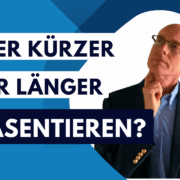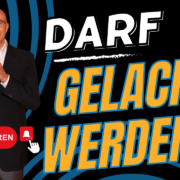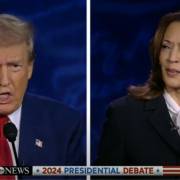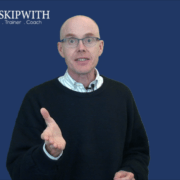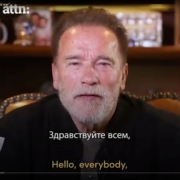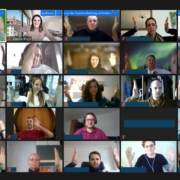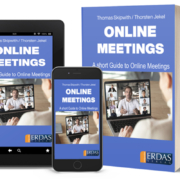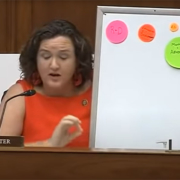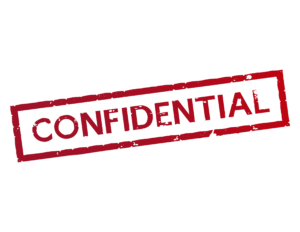YouTube video
/0 Comments/in Presentation Skills, Tips and tricks, Tips for success, Video /by Thomas SkipwithIt might sound unusual, but humor has its place in the business world too! 🧐 Presentations don’t have to be dry and boring. A well-placed joke can break the ice, lighten the mood, and make your audience smile. 😄
David JP Philips put it perfectly: When people laugh, the brain releases endorphins. These make the audience more receptive to your message. 🎯
What’s the best type of humor? You’ll find out in the YouTube video.
💡 Pro tip: Situational comedy works wonderfully too. Take a close look at your surroundings or your audience and use what’s happening right now. (Recommendation: Check out Max Amini.)
So, the learning of the day: Laughter is the most direct path to your audience’s hearts! 💥
🎤 TV debate between Donald Trump and Kamala Harris from 10.09.2024 🎤
/in Presentation Skills, Tips and tricks, Tips for success, Video /by Thomas SkipwithEven though it was politically heated, there are exciting **rhetorical** lessons that we can use for our own presentations!
🚀 🔹 **Preparation pays off** Kamala Harris spent several days preparing intensively – and it paid off! 💡 Preparation is the key to success for any presentation or pitch, especially when it comes to important messages.
🔹 **Teamwork is key** Harris had a whole team of experts behind her. 👥 We often prepare presentations on our own – but it’s worth having someone else look over the content! That way you get valuable feedback.
🔹 **Free speech = more eye contact** Both candidates spoke without a cheat sheet, but only Kamala Harris really used the **eye contact** with the camera and the audience. 👀 Fewer notes and slides can make a presentation much more powerful.
🔹 **Gestures make all the difference** Both Trump and Harris used their hands purposefully, especially the right hand, to symbolically “hammer in stakes.” ✋💥 A powerful gesture can reinforce the message.
🔹 **Repetition as a stylistic device!** Kamala Harris deliberately used repetition, e.g. at minute 11:00: “Donald Trump left us…” 🔄 This technique, the anaphora, brings clarity and emphasis. In conclusion: Harris completed her sentences – Trump often didn’t.
🧐 A clear structure ensures that the message gets through. 👉 To the YouTube video.
💬 **What rhetorical techniques will you use in your next presentation? Share it in the comments! 👇😊
——————–
If you also want to present more attractively, e.g. in a business environment, then let me support you. For example from me. I have been supporting my clients as a speaker, trainer and coach for presentations and pitches since 2002. Let’s talk: https://thomas-skipwith.com/kontakt/
3 Keys to Effective Online Presentations
/in English, English, Instructional video, Presentation Skills, Tips and tricks, Tips for success, Video /by Thomas SkipwithThe Terminator shows his gentle side.
/in English, Presentation Skills, Presentation skills coaching, Tips and tricks, Tips for success, Training letter, Video /by Thomas SkipwithWhat should the background look like online?
/in English, Instructional video, Presentation Skills, Presentation skills coaching, Tips and tricks, Tips for success, Training letter, Video /by Thomas SkipwithHow many slides should you show in a presentation?
/in English, Instructional video, Presentation Skills, Presentation skills coaching, Tips and tricks, Tips for success, Training letter, Video /by Thomas SkipwithHow many slides should you show in a presentation?
When will you give your next proposal presentation, your next pitch? Here’s a tip I highlight with my colleague Sandra Kuhn-Schulthess in the video below.
See the video here.
Task:
1. watch the short video. It takes only 2:30 minutes.
2. consider if and how you can implement the tip.
If you need support, we are ready for you.
Conclusion: With very simple means you can make an impression on the audience and be remembered.
If you also see potential for improvement in yourself or others, I recommend the book “30 Minutes Online Meetings” by Thorsten Jekel and myself. Available in German and English.
I wish you the best of luck with your next presentation, whether online or in person.
Your
Thomas Skipwith
Put your words into action.
/in English, English, Instructional video, Presentation Skills, Presentation skills coaching, Tips and tricks, Tips for success, Training letter, Video /by Thomas SkipwithCEO torn apart in the air
/in English, Instructional video, Presentation Skills, Presentation skills coaching, Tips and tricks, Tips for success, Training letter, Video /by Thomas SkipwithArmin Laschet versus Friedrich Merz: This is where the speakers’ chaff is separated from the wheat.
/in English, Feedback, Instructional video, Presentation Skills, Presentation skills coaching, Tips and tricks, Tips for success, Training letter, Video /by Thomas SkipwithArmin Laschet was elected chairman of the CDU Germany on January 16, 2021. He prevailed over his main rival Friedrich Merz. From a rhetorical point of view, I’m not surprised for a second. Why? You will find out in this article.
Armin Laschet’s speech was worlds better than that of Friedrich Merz. I suspect that Armin Laschet took a coach for this speech.
How do I compare the two speeches? I could easily list 20 points that struck me as positive in Laschet’s speech. At this point, only a few.
| Armin Laschet | Friedrich Merz |
| Really good: Armin Laschet makes a lot of eye contact with the audience behind the camera. | Not ideal: Friedrich Merz often looks sideways at those present in the room instead of into the camera. |
| Both could speak even more freely if they had a teleprompter (or two) installed. That’s how Barak Obama has done it over and over again. Nevertheless, the point goes to Armin Laschet. Especially because he speaks the ending without reading. | |
| He uses his father’s story in underground mining as an analogy for what really matters: Trust. | Friedrich Merz needs practically no stories and no analogies. Therefore, no pictures arise in my head. But these would be important. The whole speech is too abstract, too general. |
| The camera settings are well chosen. | In his place, I would have had a word with the picture director beforehand and certainly afterwards. The attitudes were consistently to his detriment: for example, several times we got to see bored party members or those who were doing something other than listening with interest. |
| Laschet cleverly put the recommendation to vote for him in the mouth of his father (14:08). Quoting Laschet, “He [der Vater] said, “Tell people they can trust you.” That goes down much better than, “Trust me.” | He speaks in the “we” form, but I am not with him emotionally. |
| The conclusion is the highlight of the speech: Armin Laschet stands on the side of the lectern and pulls his father’s dog tag out of his pocket, creating an image for the ages. Moreover, he wonderfully closed the circle to the beginning of the speech. | Friedrich Merz always shows himself more or less the same. It does not result in a special photo subject. |
Conclusion: You should definitely watch Armin Lascht’s speech. And for comparison, a few minutes of that of Friedrich Merz. Finest visual material.
If you too want to give online and offline speeches that move your audience emotionally, give me a call. I will be happy to support you.
If you want more tips, you can subscribe to my YouTube channel. Of course, you may also share the post on social media. I would be happy.
I wish you success for your next presentation.
Thomas Skipwith
Thomas Skipwith
Thomas Skipwith helps executives, companies and individuals to present like a pro and avoid losing business and reputation through poor and boring presentations.
He is a regular speaker at major events and a five-time winner of the European Championship of Public Speaking.
Offerings
Contact
DESCUBRIS Ltd.
Thomas Skipwith
Bachmattstrasse 10
CH-8966 Oberwil-Lieli (near Zurich)
T: +41 41 630 39 90
E: speak [aet) thomas-skipwith.com

